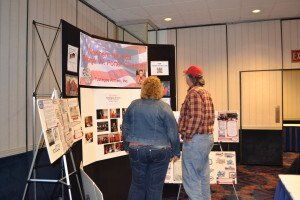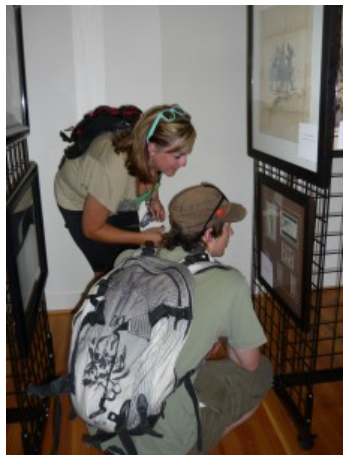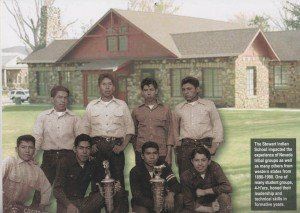Stewart Indian School
For ninety years, Stewart Indian School fulfilled
a federal commitment to pursue Native American education in Nevada. Located three miles southeast of Carson City, the school grounds encompassed 240 acres. The school opened on December 17, 1890 with 37 students from local Washoe, Paiute and Shoshone tribes and three teachers.
In 1888, the Nevada Legislature passed a bill that authorized the sale of bonds to purchase land for an Indian boarding school.
Once purchased, the land was conveyed to the Bureau of Indian Affairs who established the boarding school to train and educate Indian children with the ultimate goal of assimilation. The campus opened with a capacity for 100 students and included a Victorian-style wood framed dormitory and school house. As enrollment increased, new buildings included shops for training, a hospital, and a recreation room. A Virginia and Truckee Railroad stop was established by 1906 to deliver supplies and facilitate transporting students to and from the school. By 1919, 400 students attended the school. During the next 16 years, students learning stone masonry from their teachers, including Hopi stone masons, constructed over 60 native stone buildings.
Student curriculum included classes in reading, writing, and arithmetic but focused on vocational training in various trades, agriculture, and the service industry. Classes offered for boys included ranching and farming, mechanics, woodworking, painting, and carpentry, while girls attended classes in baking, cooking, sewing, laundry, and practical nursing. Much of the school’s basic needs were supplied by students’ products or fulfilled by their newly acquired skills. Vocational training remained the school’s principal focus until a shift to academics occurred in the late 1960’s. The school closed in 1980 due to federal budget cuts and earthquake safety issues with the masonry buildings.
The State of Nevada acquired the campus through several transactions during the 1990’s and is now used by the State for classes, training, and agency offices, including the Nevada Indian Commission located in the former Superintendent’s home. The Washoe Tribe of Nevada and California established the Stewart Community on much of the former school’s land where they also occupy some of the buildings.
Today, the Stewart Indian School is listed on the National Registrar of Historic Places and the Stewart Indian Cultural Center is to be established in the former Administration Building. Memorabilia from the former Stewart Indian School is currently displayed at the Nevada State Museum’s Under One Sky exhibit and in the Nevada Indian Commission office.
Stewart Indian School Excavation
Stewart Indian School Excavated
University of Nevada, Reno archeologist leads excavation at historic landmark in Carson City.
By UNIVERSITY OF NEVADA, RENO | September/October 2013
Stewart Indian School Excavated Photo: Jeff Dow (Patrick Burtt & Sarah Cowie at Stewart Indian School)
In August, the University of Nevada, Reno’s Department of Anthropology, in partnership with the Nevada Indian Commission and the Washoe Tribal Historic Preservation Office, conducted an excavation at the historic Stewart Indian School in Carson City. The Stewart facility is a 110-acre historic district that is home to more than 50 historic buildings.
Sarah Cowie, assistant professor of anthropology in the University’s College of Liberal Arts, directed the excavation, which also serves as a summer field school that teaches students about archaeology and historic preservation. This collaborative project combines the efforts of professional archaeologists, Native American specialists in heritage, and students from diverse backgrounds.
“The district is on the National Register of Historic Places and is deteriorating rapidly,” Sherry Rupert, executive director of the Nevada Indian Commission, said. “Many of the historic buildings were built in the early 1900s and sit unoccupied, adding the urgency to protect these buildings.”
The Stewart Indian School was open from 1890-1980 with a federal mandate to educate American Indian children, initially from the Great Basin Tribes (Washoe, Northern and Southern Paiute, and Western Shoshone), but eventually accepting children from tribal nations of the region. The intent of the Indian boarding school was not to prepare the American Indian children for higher education, but to educate them enough so they could work in the dominant society, away from their culture and traditions.
Stewart alumni have told Washoe Tribal Historic Preservation Officer Darrel Cruz that in early years, young native children were forcibly removed from their homes to live on the Stewart Indian School campus. This practice was well documented at other Indian schools around the country and resulted in a traumatic time for both the children and their parents. However, in later years attendance at Stewart was optional and alumni from that period say it was good for some. It provided an avenue for the native population to learn a skill that would allow gainful employment.
“It is important to consider the Stewart Indian School’s complicated history through a collaborative effort. Working at this site is a wonderful opportunity for us all to learn from each other, since we all bring something different to the project,” Cowie said. “As a non-native archaeologist, myself, I know I will learn a lot about indigenous heritage from native colleagues and students.”
The Nevada Indian Commission, a state agency, has been the lead on efforts to preserve the history and legacy of the school. The commission has worked with stakeholders, including the school’s alumni, to identify potential cultural tourism use of the buildings and campus. A cultural center and museum are planned, with future plans for a destination experience. The project is in the planning and fundraising phase.
“We are extremely pleased that the University of Nevada, Reno has chosen the site of the historic Stewart Indian School for their field school,” Rupert said. “It is refreshing to see a change in the way new archaeologists are being taught, with the culture and people in mind. The University students, both native and non-native are learning about the school and its importance to Nevada’s history and future.”
Although the Stewart Indian School site is now owned by the State of Nevada, it is located on the traditional homelands of the Washoe Tribe of California and Nevada.
For questions on the Stewart Indian School or preservation and fundraising efforts, call the Nevada Indian Commission at 775-687-8333





